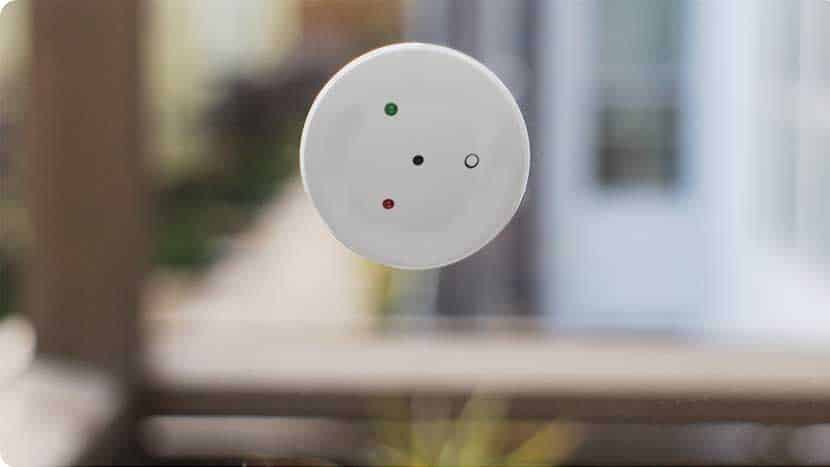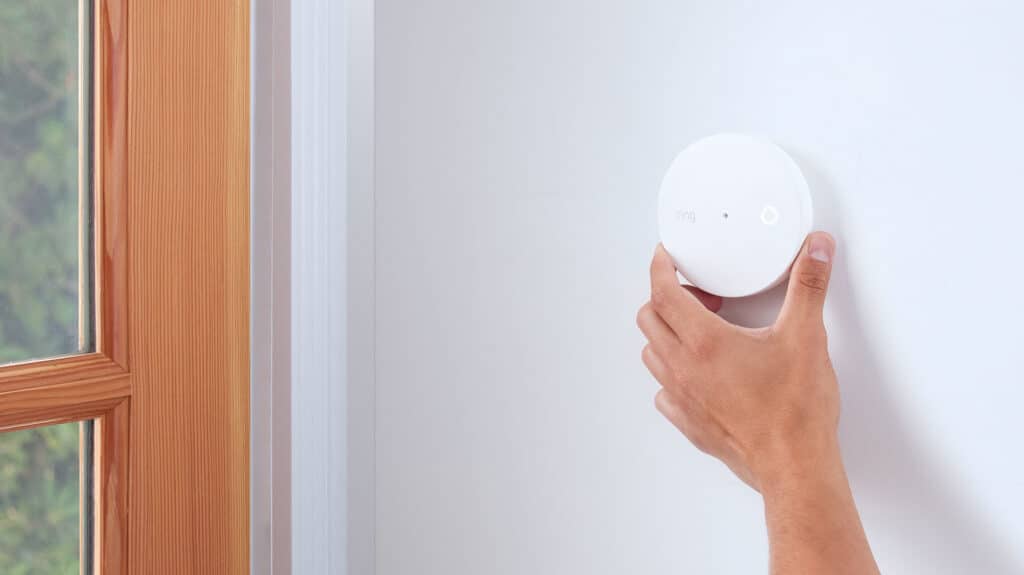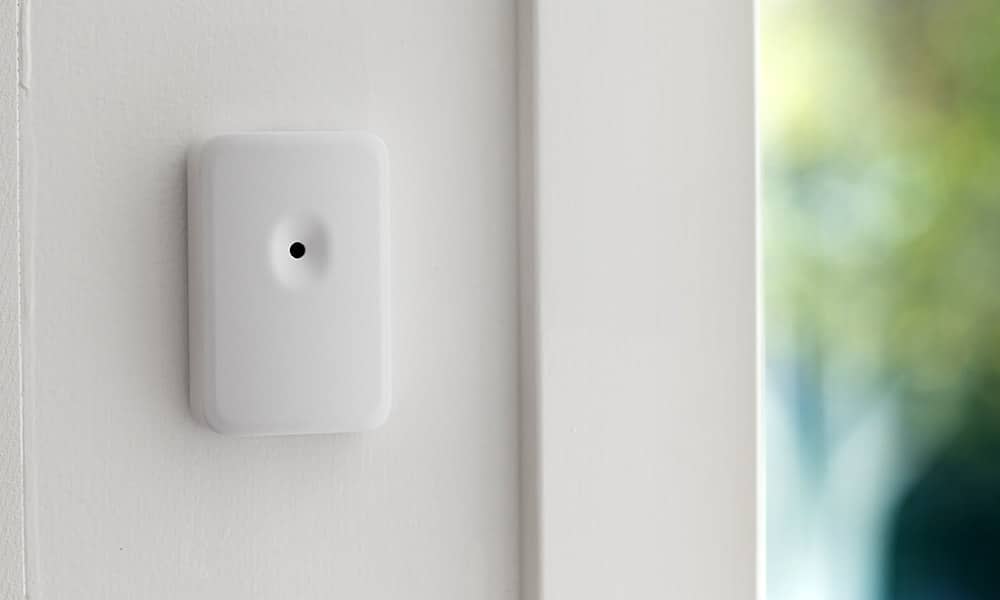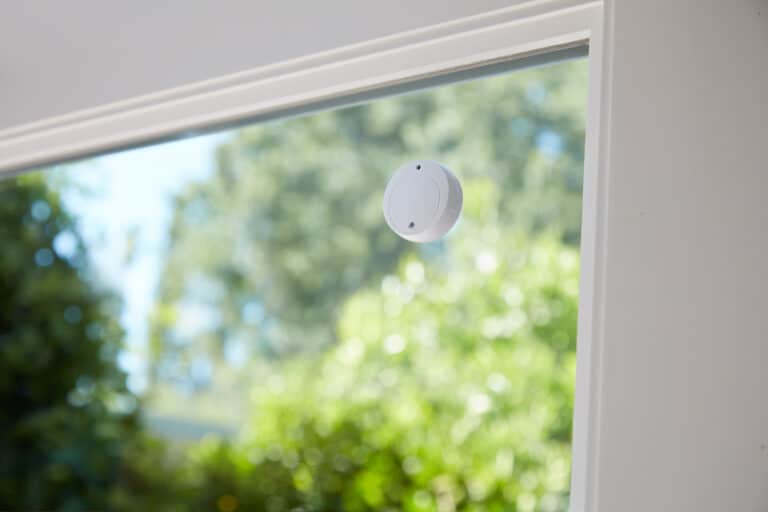Introduction
How To Reset Glass Break Sensor: A glass break sensor is a vital component of any comprehensive security system, as it detects the distinctive sound frequency and pattern generated when glass is shattered or broken. However, there are occasions when the glass break sensor may experience issues, such as false alarms or connectivity problems. In such situations, it becomes necessary to reset the glass break sensor to restore its proper functionality.
Resetting a glass door break sensor may sound like a daunting task, but it is a relatively simple process that can be accomplished by following a few straightforward steps. Whether you are a homeowner or a business owner looking to maintain a reliable security system, understanding how to reset a glass break sensor is essential knowledge.
A glass break monitor is an important part of a security system because it can pick up on the frequency and pattern of sound that is made when glass breaks. However, the glass break sensor might not work right or need to be reset for a number of reasons, such as false alarms or system repair. It’s easy to reset the glass break sensor, which can help it work again and make sure that security is being monitored reliably.

How do you reset a glass break sensor ring?
Remove the Glass Break Sensor by tapping Menu, Devices, Alarm Base Station, and Glass Break Sensor on the Ring app. Device Settings > Remove. Use a paperclip to press RESET after removing the rear cover. The LED will glow red for 3 seconds if the reset worked.
Disarm your Ring security system before resetting the glass break sensor. This prevents process disruptions and alarms. Open the Ring app on your phone or tablet and select “Devices”. Go to the security system and disable the alarm.
Locate the glass break sensor to reset. This could be a sensor-equipped window or door. To reset successfully, you must know which sensor you’re working with.
You must temporarily remove the glass break sensor from the Ring app to reset it. Launch Ring and select “Devices”. Find the glass break sensor for Step 2’s placement. Select the sensor and find the app’s delete button. Confirm removal and continue.
Power cycling the glass break sensor requires detaching and reconnecting its power supply. Find the sensor’s battery compartment or power adaptor. If the sensor uses batteries, remove them and wait 30 seconds before reinserting them. For wired sensors, unhook the power adapter, wait 30 seconds, then plug it back in.
How do you reset the ADT glass sensor?
Power cycle the sensor to reset the device.
- Place the system or zone on test.
- Remove the battery.
- Wait 1 minute.
- Reinstall the battery and replace the cover.
Before attempting to reset the ADT glass sensor, it is crucial to disarm your ADT security system. This will prevent any alarms or alerts from being triggered during the reset process. Depending on your specific ADT system, you can do this by entering your security code on the control panel or using the ADT mobile app.
Identify the specific ADT glass sensor that requires resetting. This could be a window or a door equipped with the sensor. It is important to know exactly which sensor you are working with to ensure a successful reset.
To reset the ADT glass sensor, you will need to remove power from the device. Locate the power source, which could be a battery compartment or a wired connection. If the sensor is battery-powered, remove the batteries and wait for about 30 seconds before reinserting them. If it is a wired sensor, find the power supply connected to the sensor and unplug it. Wait for approximately 30 seconds before plugging it back in.
After waiting for the specified time, restore power to the ADT glass sensor. If it is a battery-powered sensor, reinsert the batteries into the compartment. If it is a wired sensor, plug the power supply back into the appropriate outlet.
How do you reset a Honeywell glass break sensor?
You can reset a Honeywell 5853 Glass Break Sensor by providing a disarm command at the panel twice. Doing this will clear the system alarm caused by the Honeywell 5853 and reset the sensor. You will need to enter your system’s Master Code or a valid user code to provide a disarm command.
After removing the power source, wait for approximately 30 seconds to ensure any residual power is drained from the sensor. This allows for a complete reset. Once the waiting period is over, restore power to the Honeywell glass break sensor. If it is a battery-powered sensor, reinsert the batteries into the compartment. If it is a wired sensor, plug the power supply back into the appropriate outlet.
To verify if the reset was successful, it is important to test the Honeywell glass break sensor. Arm your security system and simulate a glass-breaking sound within the range of the sensor. You can achieve this by tapping on a glass surface or playing a glass-breaking sound effect nearby. Check if the glass break sensor detects the sound and triggers the alarm or notification on your Honeywell control panel or mobile app.
If the glass break sensor does not function as expected after the reset, or if you encounter any difficulties during the process, it is advisable to contact Honeywell support for further assistance. They can provide you with additional troubleshooting steps tailored to your specific Honeywell system and help resolve any persistent issues you may be facing.
Why is my ADT glass break sensor not working?
If your Glass Break Sensor reports offline or malfunction, check for a low battery signal in the history on your Frontpoint App or website. If it has reported a low battery recently, change the batteries. It this does not resolve your malfunction, please contact Customer Support.
Interference: If there are other electronics or items close to the glass break sensor, they can interfere with it and make it less accurate or not work at all. Radio frequency interference from nearby devices or real obstacles can make it hard for the sensor to pick up sounds of breaking glass.
Solution: Move any electronic devices or objects that may be causing interference away from the glass break sensor. Clear any physical obstructions, such as curtains or furniture, that might be blocking the sensor’s line of sight to the glass surfaces it is intended to monitor.
Low Battery: If your ADT glass break sensor is battery-powered, a low battery can cause it to malfunction or stop working altogether. When the battery power is low, the sensor may fail to detect glass-breaking sounds or transmit signals properly.
Solution: Check the battery level of your ADT glass break sensor and replace the batteries if necessary. Follow the manufacturer’s instructions for battery replacement, ensuring that you use the correct battery type and install them correctly.
System Malfunction: Occasionally, there may be a system malfunction or communication issue between the glass break sensor and the ADT security system. This can be caused by various factors, such as software glitches or connectivity problems.
Why is my glass break sensor beeping?
Power failures and surges, battery issues, and other problems can cause window sensors to beep, and the beeping can become stressful or troubling over time. It’s important to get the beeping sensor stopped — and to determine what caused it to beep in order to reduce the chances of it happening again.
Faulty Wiring or Connection: A hardwired glass break sensor blaring may signal a wiring or security system connection issue. Warning beeps can indicate loose or broken cables.
Solution:Check the glass break sensor-security system panel wiring. Make sure all connections are safe. Contact a professional wiring inspector and repairman if you find any difficulties.
Sensor Placement Issues: Incorrect placement or misalignment of the glass break sensor can sometimes cause false alarms, triggering the beeping sound. If the sensor is not positioned correctly or is too far from the glass surface, it may not be able to detect glass-breaking sounds accurately.
Read and follow the manufacturer’s installation instructions to set up the sensor. Move the sensor to ensure it’s within range and facing the appropriate way for best recognition.
The glass break sensor may beep due to false warnings from loud noises, vibrations, or unexpected temperature changes. Nearby construction, traffic, and loud appliances are examples.
Fix any noise or vibration sources around the alarm to prevent false alarms. If possible, modify the glass break sensor’s sensitivity settings to reduce false alarms without impacting its capacity to detect true glass shattering sounds.

How do glass break sensors work?
When a pane of glass shatters, it creates a distinct sound frequency. An acoustic glass break sensor works by “hearing” the sound of shattering glass, then triggering an alarm. That means one sensor can cover lots of windows (and glass doors) in a single room.
Acoustic Detection: Glass break sensors rely on acoustic detection to identify the sound of glass breaking. When glass breaks, it produces a unique sound signature that includes a combination of high-frequency shattering noises and low-frequency vibrations. Glass break sensors are specifically designed to recognize and distinguish these acoustic patterns from background noise or other sounds.
Dual-Technology Sensors: Most glass break monitors use two or more technologies or detection modes to get more accurate results and fewer false alarms. With microphones and powerful signal processing algorithms, these sensors can figure out what the sound of breaking glass sounds like.
Microphone Placement and Coverage: Optimal glass break sensor location is crucial. For maximum coverage, they are strategically placed in a room. The sensor’s microphone(s) should have a clear line of sight to the monitored glass surface(s) to capture sound. Some glass break sensors cover a large region, while others target specific glass surfaces.
Frequency Analysis: Glass break devices record sound waves and look for specific frequency patterns that are linked to glass breaking. To tell the difference between real glass-breaking sounds and other noises, advanced signal processing techniques look at the frequency content and amplitude of the recorded sound. These algorithms are specially tuned to recognize the sound of breaking glass and block out other sounds that aren’t related.
What is glass break sensor?
A glass break sensor is a sensor that detects the vibrations in the glass surface it is connected to. The device will trigger an alarm in case an intruder breaks the glass and consequently tries to enter your facility.
Active glass break sensors emit ultrasonic sound waves or infrared beams across the protected glass surface. When the glass is intact, the sound waves or beams bounce back to the sensor. However, when the glass breaks, the reflection pattern changes, triggering an alarm or alert. Active sensors are commonly used in commercial or high-security environments.
Passive glass break sensors, also known as acoustic sensors, rely solely on the sound frequency and pattern produced by breaking glass. They use built-in microphones to capture the sound waves in the environment. Advanced signal processing algorithms analyze the captured sound, looking for specific frequency patterns associated with glass breaking. If the sensor detects the characteristic frequency pattern, it triggers an alarm or activates the security system.
Glass break sensors can cover a specific area or a greater range, depending on the purpose. Sensors with changeable sensitivity allow users to alter the detection threshold for the environment. This reduces false alarms from ambient noise and non-threatening events while detecting glass-breaking sounds.
Burglar alarm and control panels often include glass break sensors. The sensor delivers a signal to the security system when it detects shattering glass, which can sound an alarm, notify the homeowner or security personnel, or activate video surveillance cameras.
How does glass break automatically?
The main reasons of spontaneous tempered glass fracture are chipped or nicked edges during installation, binding in the frame, internal issues including nickel sulfide inclusions, thermal strains, and inadequate thickness to resist high wind pressures.
Thermal Stress: Thermal stress is one of the primary factors that can cause glass to break automatically. Glass expands when heated and contracts when cooled. If there is a significant temperature difference across different parts of the glass pane, it can create internal stresses within the material. When these stresses exceed the glass’s structural capacity, it can lead to sudden and spontaneous breakage. This phenomenon often occurs in windows exposed to direct sunlight, where one area of the glass heats up while another remains relatively cool.
Nickel Sulfide Inclusions: Some glass panes may contain small impurities called nickel sulfide inclusions. These impurities are microscopic and often remain dormant within the glass for long periods. However, under certain conditions, such as temperature fluctuations, these inclusions can expand, causing internal stress within the glass. This stress can eventually lead to the glass breaking spontaneously.
Mechanical Stress: Mechanical stress caused by external factors can also contribute to automatic glass breakage. The presence of hairline cracks or scratches on the glass surface weakens its structural integrity. Any sudden impact or pressure exerted on these weakened areas can result in the glass breaking unexpectedly. Mechanical stress can be caused by factors such as accidental impacts, excessive vibrations, or structural movement in the building.
Inadequate Installation or Manufacturing Defects: Glass breaking can result from poor installation or fabrication. If the glass is fitted without clearances, thermal expansion allowances, or faults, it might increase stress and vulnerability.

Conclusion
Remember to start by identifying the specific glass break sensor model you have, as the reset process may vary slightly between different manufacturers and models. To avoid damage during reset, deactivate the security system and disconnect the power source.
Once you have completed the reset, it is advisable to test the glass break sensor to ensure it is functioning correctly. This can be done by simulating glass-breaking sounds within the designated range of the sensor and checking if it detects and triggers the ring alarm as expected.
The glass break sensor, you continue to experience issues or the sensor fails to function properly, it may be necessary to consult the manufacturer’s documentation or seek professional assistance. They can provide further guidance or offer solutions specific to your situation. Resetting a glass break sensor is a crucial skill for maintaining the optimal performance of your security system. By following the outlined in this guide, you can troubleshoot common issues and restore the sensor’s functionality with ease.

